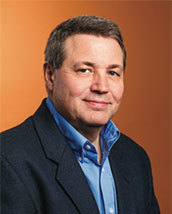Automation: more to come
I recently had the opportunity to visit some highly automated distribution facilities in Europe and Japan. These facilities incorporate automated storage, goods-to-person picking, robotic systems, shuttles, and much more.
It's no surprise that much of our industry's high-tech manufacturing is concentrated in Japan and Europe, as there are several important factors that drive automation in those regions. First, land is scarce and expensive. When land is costly, facilities tend to build upward rather than outward. Automation is ideal for tighter footprints.
Another driver of automation is the cost of labor. Economic policies in Europe and Japan provide higher minimum wages than comparable U.S. workers receive. Employees also tend to stay longer with companies than do their American counterparts, making them more expensive over time. It is not uncommon for a worker to spend his entire career with a single employer. It's also more costly to separate from a worker there, as unemployment compensation extends for a longer period and tends to be higher than in the U.S.
Companies overseas also typically tolerate longer returns-on-investments than do most U.S. businesses, so they are willing to approve larger capital expenditures. These factors together make automation attractive.
However, conditions in North America are changing, which makes a closer look at automation worthwhile.
Traditionally, large distribution facilities here could be built in the middle of nowhere, away from large cities, where land was plentiful and cheap. These operations were mostly manual, relying on inexpensive labor. On top of that, much of what they processed was in pallet-load quantities, which are easily handled via manual processes.
But the growth of e-commerce has altered this landscape. Small items delivered next day are the norm. Even companies not engaged in direct-to-consumer distribution have seen their customers demand their products ship faster and in smaller quantities. Many distributors have responded by moving operations closer to customers—to urban areas, where land and labor are more expensive. The result is that the same factors that drive distribution in Europe and Japan are beginning to be mirrored here. And automation is a good answer, just as it is there.
That is why we will be presenting more automation stories during the coming year, both from overseas and at home. The first story will appear in our January issue and feature febi bilstein, a German supplier of automotive parts. This facility is one of the most highly automated and complex I have ever seen.
We hope you enjoy reading about these facilities, and that they provide ideas that can help you respond to your ever-changing distribution challenges.

Copyright ©2024. All Rights ReservedDesign, CMS, Hosting & Web Development :: ePublishing